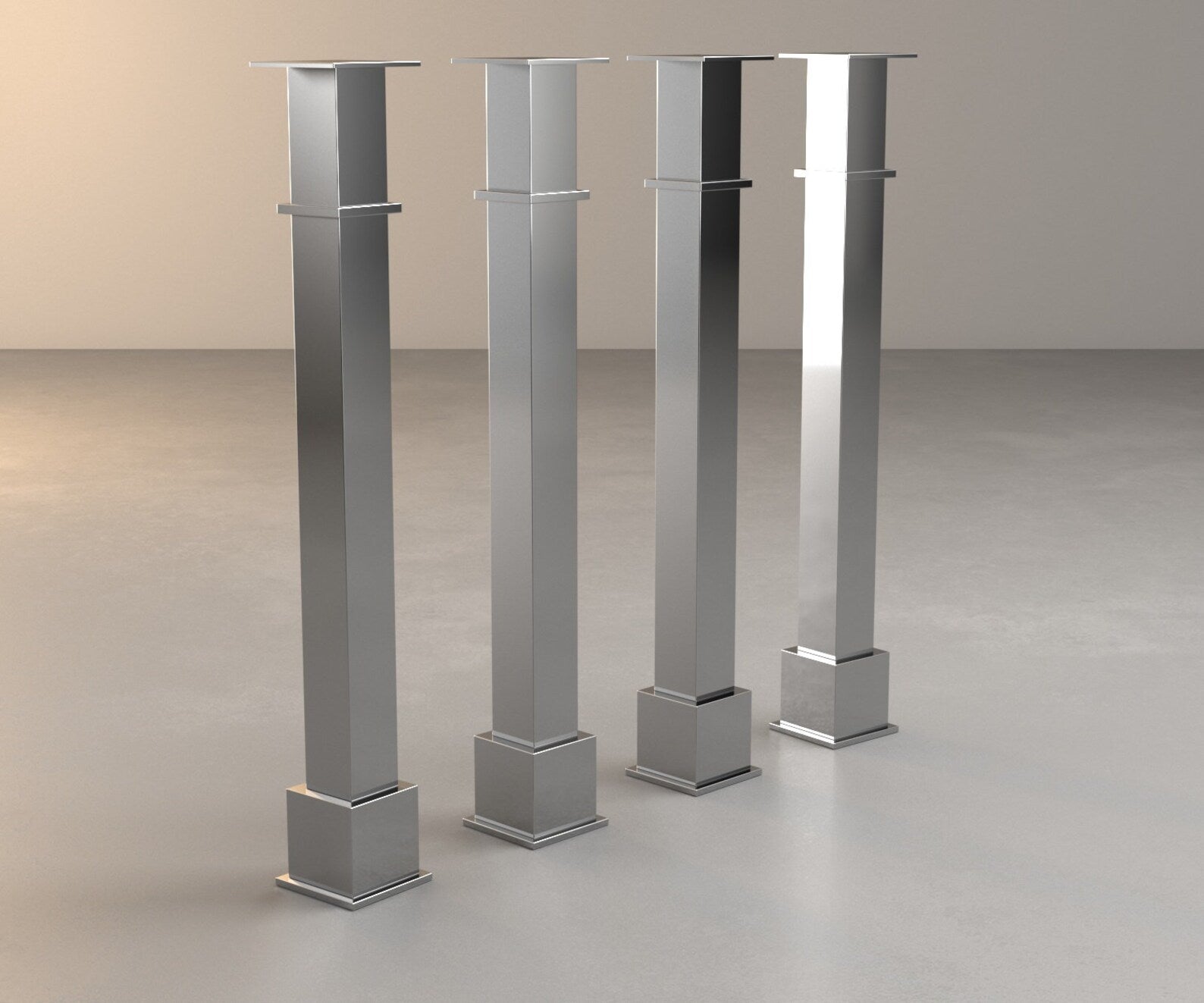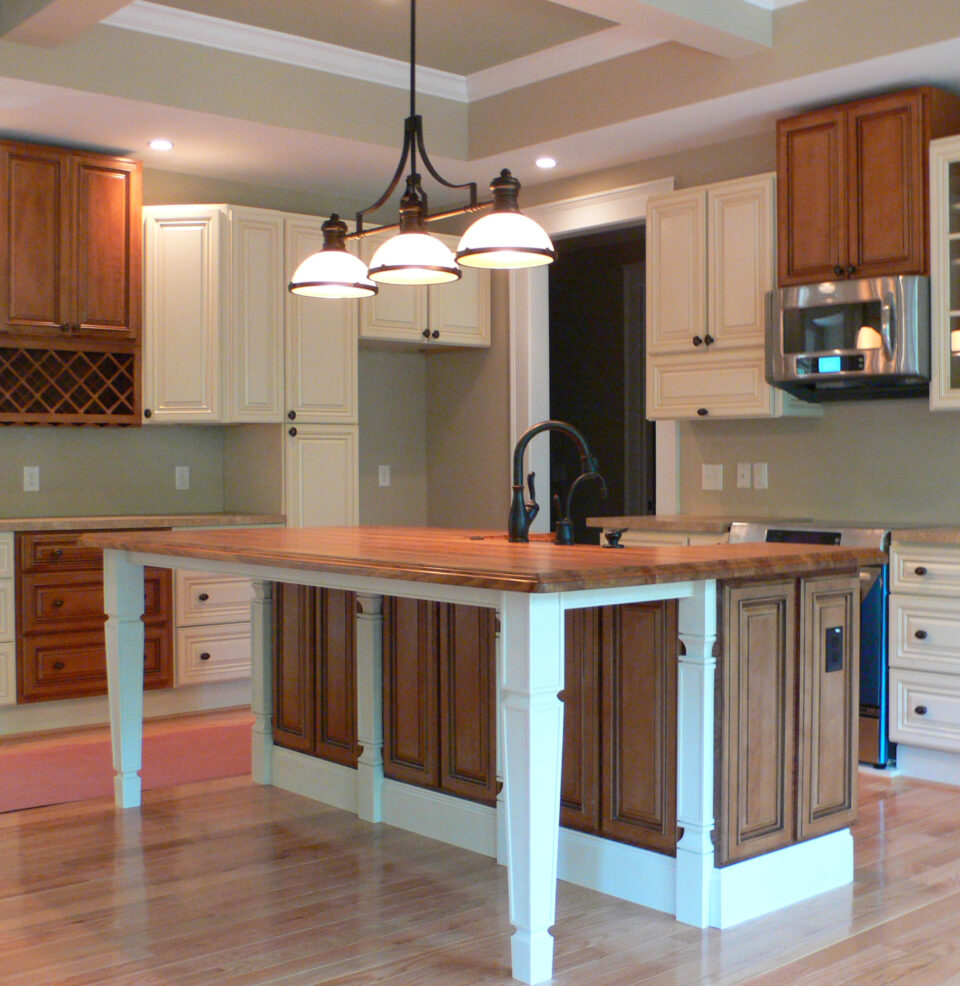How to Install a Kitchen Island Leg for Maximum Stability and Style
Top Factors To Consider When Selecting a Kitchen Island Leg for Modern Kitchen Insides
In the realm of modern kitchen interiors, the option of a kitchen island leg is critical, affecting both appearances and capability. Trick considerations include the choice of products that integrate with contemporary design, in addition to the leg's stability and assistance to ensure enduring efficiency. Additionally, elevation and percentages have to be attentively evaluated to preserve a natural look. As these elements link, they increase additionally questions concerning how to attain the best balance in between style and practicality, leaving one to contemplate the implications of each decision on the general kitchen experience.
Material Choices
When it pertains to selecting a cooking area island leg, material options play an important function in both visual appeals and performance. kitchen island leg. The most common materials include wood, steel, and composite choices, each offering potential downsides and distinctive advantages
Wood is preferred for its warmth and classic appeal, providing a timeless appearance that enhances various kitchen area designs. It is very flexible, permitting for modification in regards to coatings and colors. Nevertheless, wood may call for more maintenance to stop bending or damage from dampness.
Metal, on the other hand, brings a modern-day and industrial style to kitchen islands. Stainless-steel and functioned iron are preferred choices, recognized for their longevity and resistance to wear. They can hold up against the roughness of everyday use but might do not have the heat connected with wood.
Composite products, such as crafted wood or synthetic blends, offer an equilibrium between rate, toughness, and aesthetic appeals. These alternatives are often developed to resemble the appearance of natural products while offering resistance to spills and scratches.
Inevitably, the choice of product must align with the total cooking area layout and meant use, guaranteeing that the kitchen area island leg is both functional and visually attractive.
Style and Design
The style and design of a cooking area island leg dramatically add to the overall aesthetic of the room, matching the picked material. When picking the leg design, consider the architectural design of the kitchen. Sleek, minimalist legs made of stainless steel or acrylic harmonize with contemporary designs, while ornate, turned timber legs improve typical or farmhouse looks.
In addition, the coating of the leg can influence the aesthetic influence; a refined chrome or matte black surface might evoke modern-day elegance, while troubled timber talks to rustic charm. The leg's shape additionally plays an important role-- right, angular types convey an even more industrial feel, whereas curved or tapered legs introduce a softer, much more inviting appearance.
Including ornamental components, such as carvings or decorations, can add individuality and character to the cooking area island, further boosting its role as a focal factor. Eventually, the chosen leg design should not just align with the overall kitchen area style yet likewise show the home owner's individual taste, guaranteeing that the kitchen area island comes to be a unified and functional centerpiece within the contemporary kitchen inside.
Elevation and Percentages
Achieving the ideal elevation and percentages for a kitchen area island leg is critical for both performance and aesthetics. Kitchen area islands generally vary in elevation from 28 to 36 inches, depending upon their intended usage-- whether as a cooking surface, dining location, or work area. Requirement countertop elevation is approximately 36 inches, making it essential that the legs you pick complement this elevation to give a smooth, incorporated look.
Percentages likewise play an important role in the aesthetic balance of the kitchen area. The dimension and weight of the leg ought to agree with the overall layout of the island - kitchen island leg. A slender leg might be proper for a contemporary or minimalistic island, while a much more substantial leg may be required for rustic or traditional styles. Additionally, take into consideration the spacing in between the legs; appropriate distance guarantees comfort and convenience of activity around the island.
When selecting the height and proportions of the cooking area island leg, bear in mind the total design motif of your kitchen. This attention to detail not just boosts the performance of the area but also adds to a cohesive and visually appealing interior style.
Stability and Assistance
Continually ensuring stability and support in cooking area island legs is necessary for both safety and performance. A sound kitchen island have to endure wikipedia reference daily use, including weight from home appliances, cooking, and social events. The choice of legs ought to prioritize robust materials and layouts that can provide appropriate assistance.
When assessing stability, think about the leg's product-- wood, light weight aluminum, or steel usually provide remarkable stamina contrasted to lighter options. Additionally, the design ought to feature a wide base to disperse weight uniformly and decrease the threat of wobbling or tipping. Legs made with an A-frame or cross-bracing can dramatically improve security.

Including these factors to consider will not just boost the overall safety and security of the cooking area room yet additionally enhance the long life and capability of the kitchen island, making it an important centerpiece in contemporary cooking area insides.
Ending Up Touches
When it involves finishing a kitchen area island, thoughtful completing touches can substantially boost both its aesthetic appeal and performance. Picking the right leg style is vital, but enhancing it with appropriate information can transform the whole area. Think about adding attractive elements such as toe kicks or baseboards that match the cabinets or floor covering to create a smooth look.

A cohesive color palette and material choice will certainly raise the cooking area island, making it a captivating focal point. By paying interest to these ending up touches, home owners can create a cooking area island that is both useful and beautiful, providing to their way of life and design preferences.
Verdict

In the world of modern-day cooking area insides, the choice of a kitchen area island leg is critical, affecting both aesthetic appeals and functionality.The design and layout of a cooking area island leg dramatically contribute to the general visual of the space, enhancing the chosen material.Attaining the right height and percentages for a kitchen island leg is crucial for both performance and visual appeals.Consistently guaranteeing security and support in kitchen area island legs is important for both safety and performance.In summary, selecting a kitchen area island leg for modern-day interiors needs mindful consideration of material selections, design style, elevation, percentages, and stability.